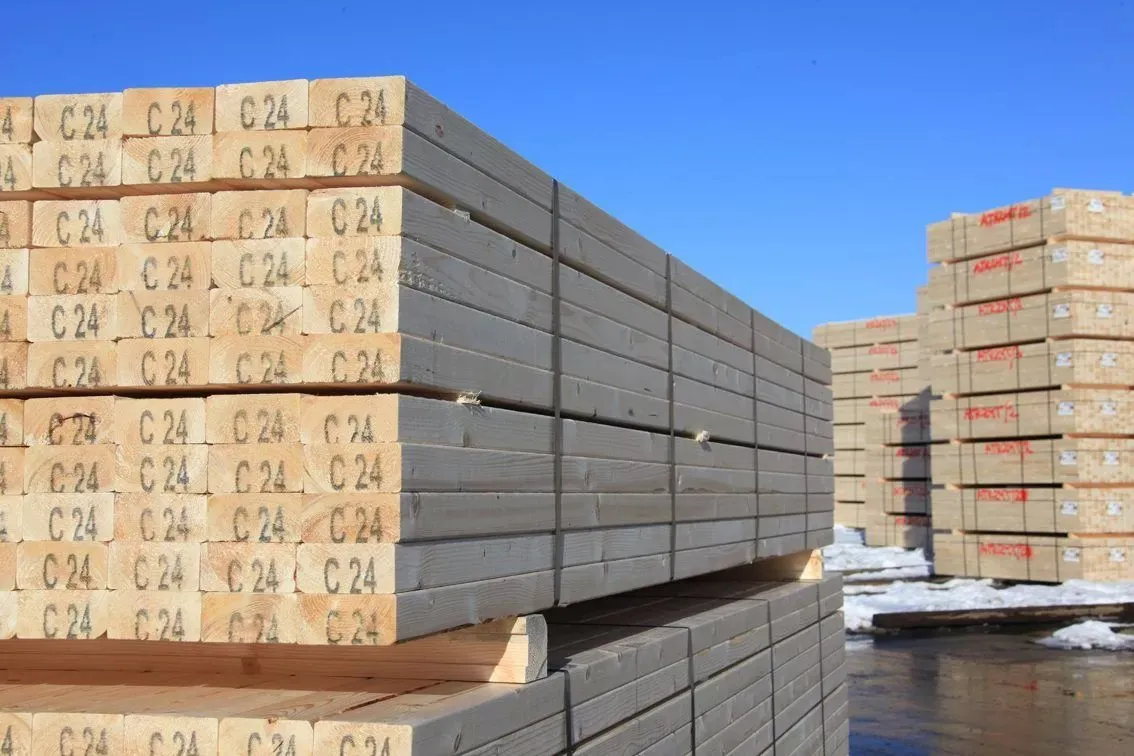When it comes to embarking on DIY construction projects, choosing the right type of timber is crucial. Among the various options available in the market, C16 and C24 timber are commonly used due to their strength and durability. However, there are significant differences between these two grades of timber that can greatly impact your project’s outcome. In this article, we will delve into the distinctions between C16 and C24 timber, allowing you to make an informed decision based on your specific needs and requirements.
What is C16 Timber?
C16 timber is a popular choice for construction projects that do not require high load-bearing capabilities. It is widely used for applications such as stud walls, non-structural framing, and internal joinery work. The grading system of C16 timber ensures its suitability for general-purpose use while still maintaining structural integrity.
Characteristics of C16 Timber
C16 timber possesses several noteworthy characteristics:
1. Strength: While not as strong as its counterpart, C24 timber, C16 timber still provides sufficient strength for many common construction applications.
2. Appearance: One aspect to consider with C16 timber is its visual qualities. It may contain more visible defects compared to higher-grade timbers like C24.
3. Cost-effective: If you’re looking for a budget-friendly option without compromising on quality, then C16 timber fits the bill perfectly.
Introducing C24 Timber
C24 timber represents a premium grade of wood that offers enhanced structural capabilities and an overall superior product. This grade is typically used in projects where higher loads or greater spans are required, such as roof trusses or floor joists.
Key Features of C24 Timber
C24 timber boasts several key features that set it apart:
1. Strength and Durability: With a higher load-bearing capacity than its counterparts, C24 timber ensures structural stability and long-lasting performance.
2. Appearance: Compared to C16 timber, C24 timber generally has fewer visible defects and a more uniform appearance, making it an excellent choice for projects where aesthetics matter.
3. Versatility: From large-scale construction projects to intricate woodworking, C24 timber offers versatility in its application due to its strength and durability.
Now that we’ve covered the basics of C16 and C24 timber let’s explore their specific uses and limitations in more detail.

Applications of C16 Timber
C16 timber is commonly used in a wide range of DIY construction projects that do not require heavy load-bearing capabilities. Some common applications include:
1. Stud Walls: C16 timber is often used for creating stud walls within buildings, providing structural stability while separating spaces effectively.
2. Non-structural Framing: For non-load-bearing purposes like door frames or window casings, C16 timber is an ideal choice due to its cost-effectiveness and adequate strength.
3. Internal Joinery Work: From shelves to cabinets, C16 timber can be utilized for various internal joinery applications where high structural strength is not a primary concern.
While C16 timber offers sufficient strength for many DIY projects, it may not be suitable for applications that require heavy loads or long spans. This is where the superior qualities of C24 timber come into play.
Advantages of Choosing C24 Timber
C24 timber provides several advantages over lower-grade timbers when it comes to structural integrity and versatility:
1. Load-Bearing Capabilities: Due to its enhanced strength properties, C24 timber is well-suited for projects that require higher load-bearing capabilities such as floor joists or roof trusses.
2. Longevity: The superior durability of C24 timber ensures that your construction project will stand the test of time without compromising on safety or stability.
3. Aesthetic Appeal: With fewer visible defects and a more uniform appearance, C24 timber lends itself to projects where the visual aspect is of utmost importance, such as exposed beams or decorative elements.
It’s important to note that while C24 timber offers numerous advantages, it may come at a higher cost compared to lower-grade alternatives. However, the enhanced performance and longevity it provides often justify the investment.
Conclusion
In summary, both C16 and C24 timber have their unique strengths and applications in the realm of DIY construction. While C16 timber serves well for general-purpose use and non-structural framing, C24 timber takes center stage when it comes to load-bearing capabilities and visual appeal. By understanding the differences between these two grades of timber, you can make an informed decision based on your project’s specific requirements. Whether you prioritize cost-effectiveness or structural superiority, choosing the right grade of timber will undoubtedly contribute to the success of your DIY endeavors.

